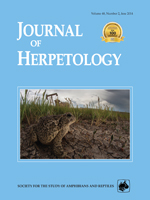Quantitative studies of the axial undulatory swimming techniques used by secondarily aquatic vertebrates have been largely restricted to crocodilians. Numerous members of the suborder Lacertilia (lizards) are also known to swim using axial undulatory techniques, but how they do so has received minimal attention from the scientific community. We investigated the morphology and undulatory locomotor kinematics adopted by the Eastern Water Dragon (Intellagama lesueurii) through observation of natural swimming and filming of animals in a flume tank with a high speed camera. We found that morphological modifications associated with improved swimming ability and correlations between wave characteristics and swimming velocity are limited to the tail. The shape of dorsal spines and the reduction in the width of transverse processes of the caudal vertebrae result in a mediolaterally compressed tail instead of the typically rounded or dorsoventrally compressed tail seen in other Australian agamids. Axial undulatory swimming in I. lesueurii was found to be conceptually similar to that of crocodilians, but the relatively long and thin terminal part of the tail produces a different shaped undulatory wave. Unlike crocodilians and fishes, I. lesueurii does not use frequency moderated velocity control. Instead, changes in velocity are solely controlled by the phase speed of the propagating wave. The combined effect of these traits is comparable efficiency and performance in the water relative to that of crocodilians and an improvement relative to terrestrial lizards.
How to translate text using browser tools
1 June 2014
Aquatic Locomotor Kinematics of the Eastern Water Dragon (Intellagama lesueurii)
Jeremy L. Ringma,
Steven W. Salisbury
ACCESS THE FULL ARTICLE

Journal of Herpetology
Vol. 48 • No. 2
June 2014
Vol. 48 • No. 2
June 2014




